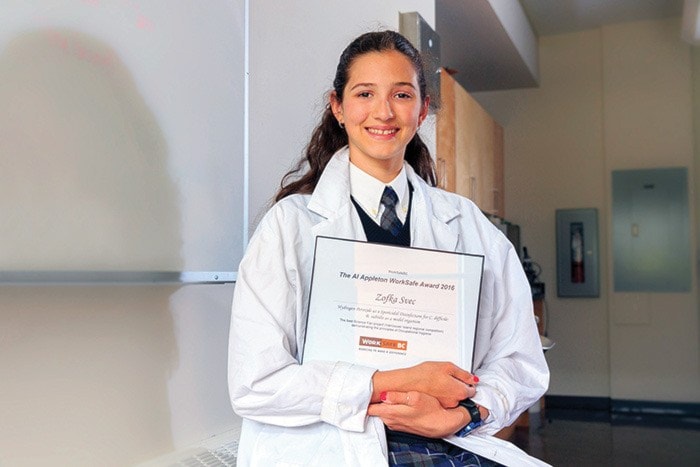When Zofka Svec was nine years old, she couldn't understand why her mother was always tired.
Over a roughly one-year period, her mother, Barbara, was plagued with fatigue. She had just enough energy to do her “motherly duties,” but couldn't manage much more before she had to go lie down on the couch. She had to change her diet and sometimes couldn't digest food properly as well.
“I remember we wouldn't go out on weekends very much. I was sad, but I didn't understand why we couldn't do much,” Zofka said.
It was during a trip to Vancouver, that a light bulb went off and Barbara's energy levels slowly began to increase again.
It was several years later that Zofka, a Victoria resident, learned her mother had been recovering from a Clostridium difficile (C. difficile) infection that she contracted a few years earlier.
According to the Public Health Agency of Canada, C. difficile is one of the most common infections that occur in patients in hospitals or long-term care facilities, who are taking certain antibiotics in high doses or over a prolonged period of time that weaken the immune system.
The bacteria and their spores are found in feces and people can get infected if they touch surfaces contaminated with feces, then touch their mouth.
Symptoms include fever, loss of appetite, nausea, diarrhea and abdominal pain and in some cases, it can be fatal.
In October, the 12-year-old Maria Montessori Academy student, decided to make C. difficile the focus of her project for the Vancouver Island Regional Science Fair, for which she recently won a provincial award.
Using a lab at the University of Victoria and the help of a mentor, Zofka studied the effectiveness of seven different disinfectants and their ability to work against the infection.
She laid out 24 sheets of aluminum and swabbed a bacteria called Bacillus subtilis (similar to C. difficile, but easier to handle) on it. Then she swabbed seven different disinfectants including varying strengths of ethanol, diluted hydrogen peroxide, quaternary ammonium salt, a thyme oil derivative and bleach onto the aluminum sheets.
What she found surprised her. The results showed diluted hydrogen peroxide was the most effective disinfectant against the infection, as opposed to bleach which is currently being used in hospitals.
“Basically hydrogen peroxide worked and nothing else did,” Zofka said, adding she did the experiment three different times. “They're all 98 to 99 per cent effective, which is really good.”
Earlier this month, Zofka was the recipient of WorkSafeBC's Al Appleton Award for her work with the infection. The provincial award is given out annually to B.C. students in grades 7 to 12, whose projects demonstrate the principles of occupational hygiene: identifying, assessing and controlling health hazards in the workplace.
“Zofka's project was (selected as) the winner because she showed a level of understanding that this could have a big potential impact on health care,” said Ray Merriman, WorkSafeBC occupational hygiene officer and award judge.
Up next, Zofka is planning on pursing a career in virology, immunology and disease prevention.
“I like how you're able to save lives if you actually do it right,” Zofka said. “It's not a real tangible person that's killing you, it's these little things that have evolved to be so smart that we can't disinfect them or we can't treat them. It's weird that humans can't outsmart these tiny things with no brains.”
